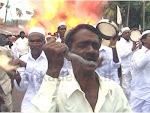History and Warfare
If history has shown the observer one thing, it is that war follows man like a shadow. According to one source, documented history has recorded an estimated 300 years of known peace on our planet - leaving thousands of years open to conflicts of varying degrees. Interestingly enough, this mostly unknown fact forces us to recognize that there has been some source of conflict - be it religious, ethnic, territorial or otherwise - between two or more groups on our planet on a consistent basis for thousands of years.
GlobalFirepower.com (GFP)
GFP provides a unique analytical display of information covering nations from around the world with statistics based on various public sources. Countries covered include the major global players prominent in today's international landscape along with other smaller nations making the news - this spectrum helping to produce a broad comparison of military strengths from across the globe. This is a personal and experimental site meant for entertainment and to stir up dialogue.
Final Thoughts
It goes without saying that lists such can be completely subjective, though the GFP intention is to be wholly unbiased. No list could ever offer a proper display of accurate military firepower unless one had a full-time staff researching these numbers daily with many connections to these world governments. This listing is updating approximately once every 12 months based on new (if any) information garnered from various print and online sources.
The GFP final ranking is based on an in-house formula used to generate an average of all applicable statistics found on this website when compared against each country with applicable modifiers (bonuses and penalties) added to each nations score to present a more accurate list. The last major statistics review was in February of 2009. The GFP ranking list was updated in May of 2009. Changes to the list now include factors for current/recent military experiences, training levels and equipment quality. Denmark, South Africa and Georgia are new-adds bringing the country total to 42 nations.
Enjoy the numbers! It is hardly a super-accurate scientific measurement of military strengths but still entertaining to consider at the very least.




